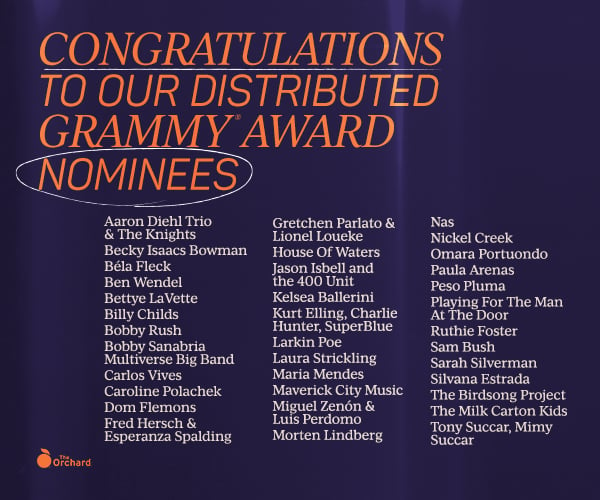MBW Views is a series of exclusive op/eds from eminent music industry people… with something to say. The following comes from Eamonn Forde (pictured inset), a long-time music industry journalist, and the author of The Final Days of EMI: Selling the Pig. UK-based Forde’s new book, Leaving The Building: The Lucrative Afterlife of Music Estates, is out now via Omnibus Press.

Even if compressed together, they are not quite Alan Partridge’s dream Beatles album, but 1962-1966 and 1967-1970 (aka the Red and Blue albums) have collectively served as a particular framework for the band’s legacy since their concurrent release in April 1973.
For many people born after the band’s split, these compilations became the twin entry points, for better and for worse, into the band and provided the initial lens through which they could start to understand them.
Now, however, their parameters and their scope are being revised with new expanded editions that are as much a way to right perceived historical wrongs in their tracklisting as they are a way to entice fans to, once again, buy two albums (for a mere £139.99 on vinyl) that they probably know better than most of their own family.
The core aesthetic thrust is to include more tracks from Revolver (previously represented by ‘Eleanor Rigby’ and ‘Yellow Submarine’), The Beatles (previously represented by ‘Back In The USSR’, ‘While My Guitar Gently Weeps’ and ‘Ob-La-Di, Ob-La-Da’) and Abbey Road (previously represented by ‘Here Comes the Sun’, ‘Come Together’, ‘Something’ and ‘Octopus’s Garden’).
By skipping over a multitude of tracks in the original versions, the feeling today is that these compilations were a betrayal of the scope of what The Beatles were all about.
Yet this recalibration of the Red and Blue albums raises more catalogue marketing questions than it answers: questions about historical revisionism; questions about bending old narratives to fit new times; questions about forcefully shifting critical parameters; questions about original packaging concepts now ceding ground to new commercial opportunities; questions about treating previous commercial offerings as palimpsests.
The enduring power of these compilation albums, commercially as much as culturally, lies in diametric opposition to the, let’s say, unique manner in which they were initially compiled. They were the result of Allen Klein frenetically searching for a way to get fresh Beatles “product” into the market and to coincide with the planned The Long and Winding Road documentary (that was eventually shelved but which morphed into Anthology in 1995).
“Yet this recalibration of the Red and Blue albums raises more catalogue marketing questions than it answers.”
John Lennon bellyached that George Harrison had too much input into the tracklisting (which may explain the bewildering inclusion of ‘Old Brown Shoe’) but simultaneously said he was “busy at the time” and so did not reply to working drafts from Klein covering the running order.
Paul McCartney also claimed he “didn’t take an awful lot of interest in them”, in part masking the fact he did not want to deal with Klein and rubber stamp anything he did with the band’s catalogue. Ringo Starr, one presumes, was not fussed either way.
Tellingly, the day they came out, Lennon and Yoko Ono were planning a press conference to announce that Klein was being sacked as manager of the Lennon/Harrison/Starr triad. Except canny Klein got his own statement on the matter out first.
Maybe, as with the McCartney-driven reworking of 1970’s Let It Be as Let It Be… Naked in 2003 (to unpick all those Phil Spector’s appliqués that Klein commissioned and that McCartney condemned), this is part of a wider expunction of Klein from the Beatles narrative. Allen who?
As the Red and Blue albums are being mechanically separated half a century on, this feels like not just a denial of their original importance but also the end game in scrubbing from the record all previous attempts to get to that Partridgian Holy Grail of definitive Beatles compilations.
Who – even in Australia, Singapore and New Zealand where it was originally released – remembers 1966’s Greatest Hits Volume 1? Will anyone light a candle for the same year’s A Collection Of Beatles Oldies? Who weeps for 1970’s Hey Jude/The Beatles Again album? Will no one raise the flag for 1972’s The Essential Beatles? Or erect a statue to 1976’s Rock ’n’ Roll Music (which has, hands down, the worst sleeve of any Beatles record)? Is there room in anyone’s heart for 1977’s Love Songs (another stinker of a sleeve)? Will anyone shout “Action!” for 1982’s Reel Music (whose sleeve designer seemed to be waging war on art)? Whither 1982’s 20 Greatest Hits (which was basically a dry run for 2000’s 1 album)? All of them were produced, shipped to the stores, the sales receipts tabulated, the royalties distributed. But never spoken of again.
“Audiences, no longer obliged to follow the scriptures of approved compilations passim, can and will create whole new typologies of ‘greatest hits’ themselves.”
For the most analysed musical act of all time, it is inevitable that the narrative foundations keep shifting. The handling of the legacy will necessarily adapt to internal forces within The Beatles/Apple Corp as new enmities rise up and older wounds are healed.
They will also have to shift in light of external forces and changes in not just public tastes but also in the public’s understanding of The Beatles and their creative hierarchy. They will shift again because of how audiences, no longer obliged to follow the scriptures of approved compilations passim, can and will create whole new typologies of “greatest hits” themselves.
Look to streaming for proof of that. Their two biggest songs on Spotify are not presumed heavyweights like ‘Yesterday’, ‘Hey Jude’ or ‘She Loves You’. They are ‘Here Comes The Sun’ (their only track so far to surpass a billion streams and, fascinatingly, both a George Harrison song and never a single) and ‘Come Together’.
In 1987, there was, to tie-in with CD reissues, a major media jamboree around Sgt Pepper… forcefully presenting it as THE Beatles album. That album held the critical consensus for a while, but then in the early 1990s things started to shift to proclaim Revolver as THE album (aided by the NME in 1993 naming it as the best album of the 1960s, just as Britpop was warming up). After that it shifted again, where Abbey Road became THE album. And it will surely shift again. (Although it is unlikely that anyone is going to vote Yellow Submarine as THE album.)
The Beatles’ narrative, as articulated through their records, was always topsy-turvy anyway. One just needs to look at the bewildering and confounding cut and shuts of the initial run of US albums as compared to the UK versions and how two very different representations of the first half of their career have emerged. So maybe it makes sense to keep with the topsy-turvy dynamic. Or, if you will, the moptopsy-turvy dynamic.
The narrative reconstruction has also extended into documentaries about the band. Compare 2021’s Get Back documentary (everything was pretty much delightful) to 1970’s Let It Be documentary (everything was pretty much awful) and consider how they use the exact same source material to tell two very different stories of the band, and their internal politics, in their closing years. And also consider the reasons why that story has been so dramatically and remarkably shifted, especially with regard to the future vitality of The Business Of The Beatles.
“As for The Beatles: has a band’s catalogue history been simultaneously so forgotten and so reconfigured? And what does that tell us about the shifting ‘story’ of the group?”
“The past was alterable,” wrote George Orwell as he explained the mechanics of doublethink in 1984. “The past never had been altered.”
What we should maybe start calling the Red-der and the Blue-r albums are not quite on a par with Kanye West’s initial plan for The Life Of Pablo in 2016 which he conceived as a rolling art project where tracks would be added to and subtracted from as the tracklisting entered a fluid state, thereby making a point about creativity in the streaming age while hanging a question mark over the viability of the album model. (West eventually stopped tinkering with it.)
As for The Beatles: has a band’s catalogue history been simultaneously so forgotten and so reconfigured? And what does that tell us about the shifting “story” of the group?
Maybe 20 years from now, even newer versions of the Red and Blue albums will – as the ringing of commercial opportunities become too loud to ignore – no longer be deemed as fit for purpose and become “reimagined” all over again.
Eventually and inevitably, they will meld and the touchstone compilation for future generations could be the final palimpsest of all: the Purple album.Music Business Worldwide





